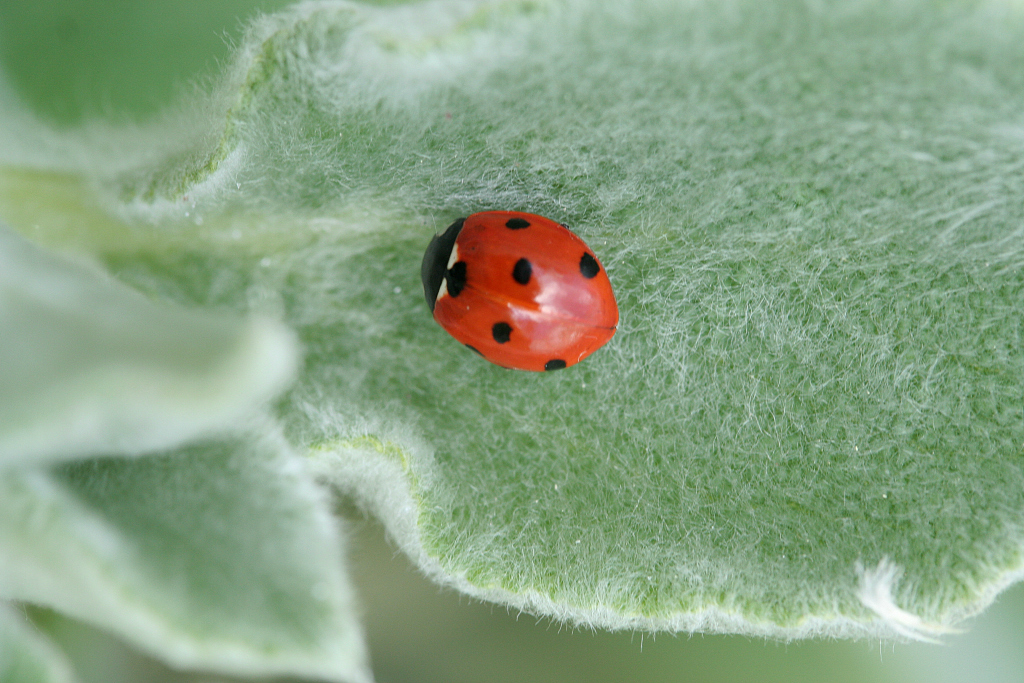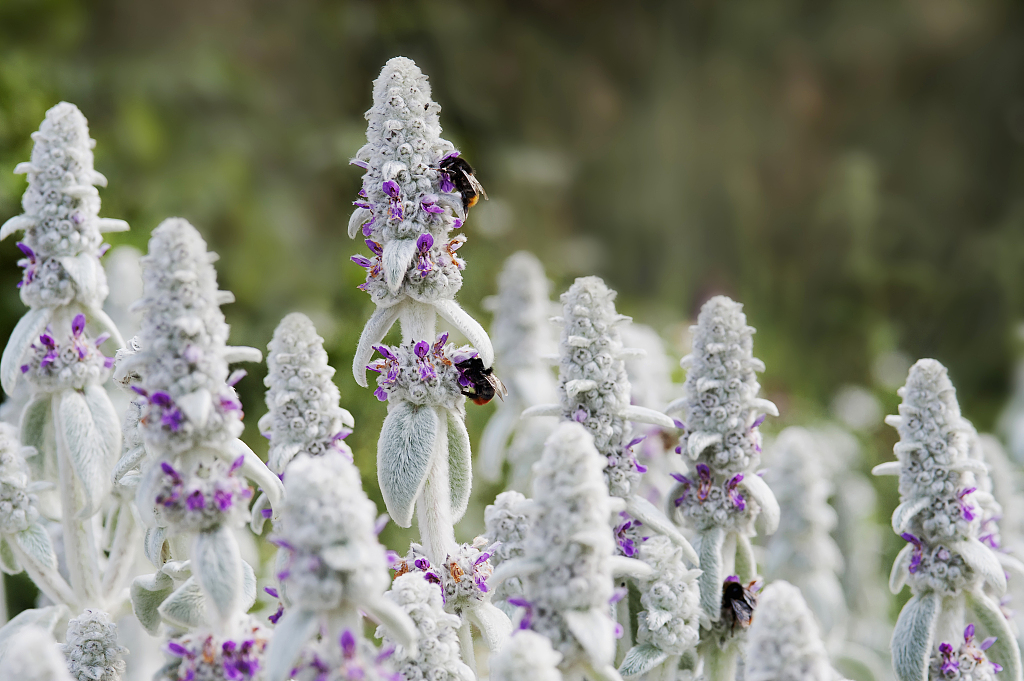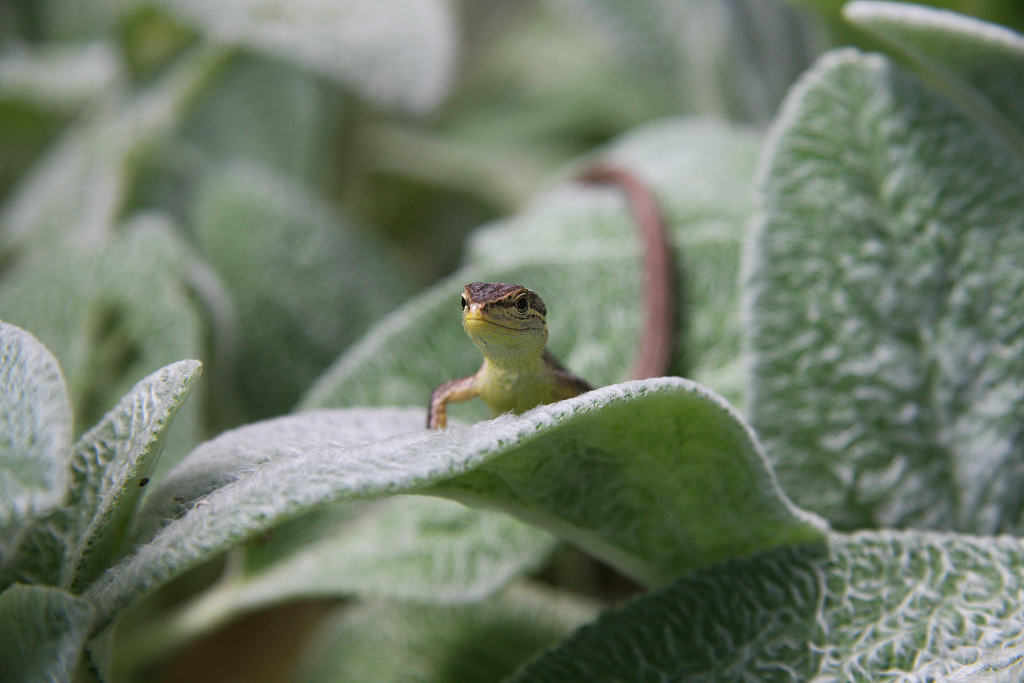Have you ever seen a plant that wears a "sweater", soft and warm, that even has the same tactility as lamb's ears? If you have not, you may want to keep a lamb's ear, a special plant in your garden or pot, as it has so many interesting facts that will not disappoint plant lovers.

A ladybird on a leaf of a lamb's ear. /VCG
A ladybird on a leaf of a lamb's ear. /VCG
Lamb's ear is a perennial herb native to Turkey, Armenia and Iran. It gets the common name from the silver silky hairs that densely cover the surface of the leaves making you feel like you are touching the soft ears of a lamb, as well as the leaves that curve into the shape of lamb's ears.

The plant was named after the lamb's ear. /VCG, designed by Jia Jieqiong/CGTN
The plant was named after the lamb's ear. /VCG, designed by Jia Jieqiong/CGTN
The plant will produce flowering stems with purple flower blossoms during late spring and early summer. As the plant is both good for leaves and flower appreciation, it is widely cultivated around the world. In China, you can find the flower in many flowerbeds for ornamental purposes.

Bees pollinate the flowers of lamb's ears. /VCG
Bees pollinate the flowers of lamb's ears. /VCG
Most people choose to grow lamb's ear plants for the interesting, woolly leaves that are so different from the ordinary leaves of other plants. Hence, they are favored by children. The plant is also very easy to grow – another reason for gardener's choice.

A lizard on a lamb's ear leaf. /VCG
A lizard on a lamb's ear leaf. /VCG
The plant can do best in average, dry to medium and well-drained soil under full sun. If the summer in your area is hot, you can provide some light afternoon shade for it. It is quite hardy to drought and air pollution. Avoid over watering and the plant can accompany you and your children for years.
Read more: Season of flower
(All images via VCG)
(If you want to contribute and have specific expertise, please contact us at nature@cgtn.com.)